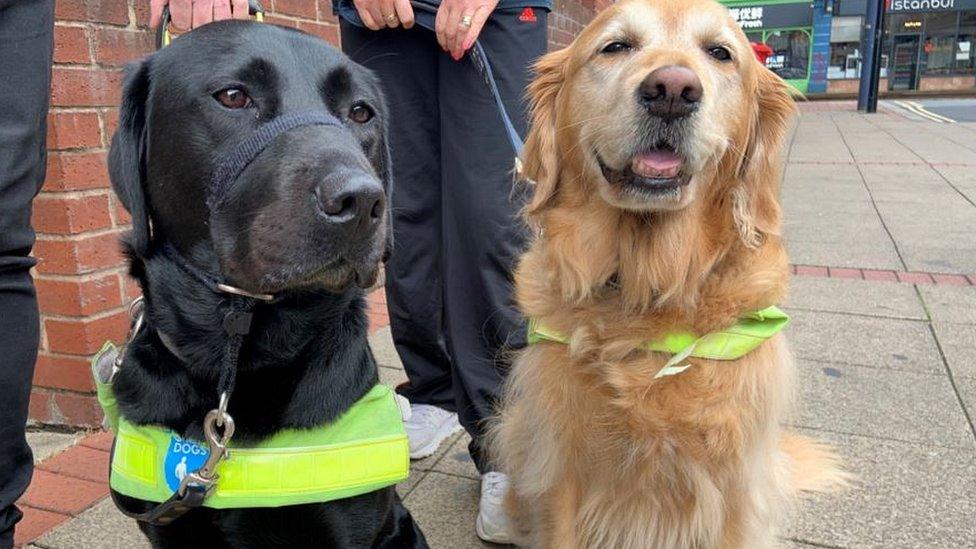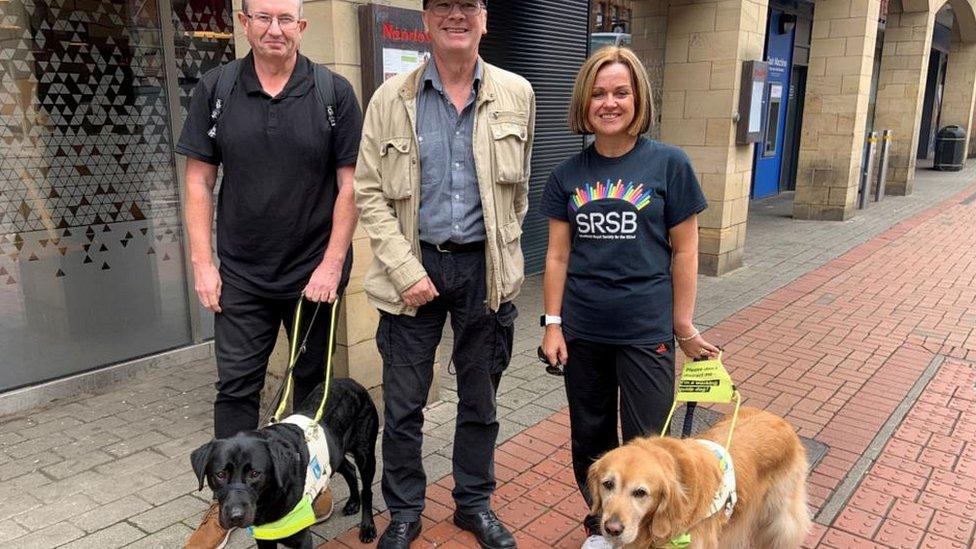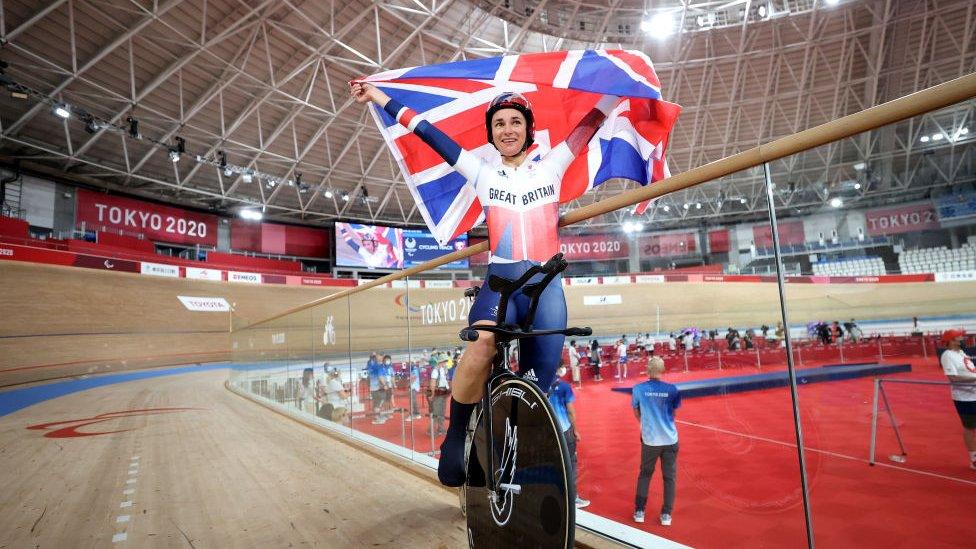Sheffield: Travel changes 'hard work' for blind people
- Published

SRSB said some clients found streets which were part of an active travel scheme were hard to navigate
Visually impaired people in South Yorkshire say changes to a city centre to allow more journeys on foot or by bicycle are putting them at risk.
Sheffield Royal Society for the Blind (SRSB) said the scheme in Sheffield included paths shared by bikes and pedestrians.
Robert McCann, who is severely partially sighted, said navigating the city was "hard work".
Sheffield City Council has been approached for comment.
The government allocated £161m to 46 local authorities in May to support new footways, cycle lanes and pedestrian crossings.
It followed the launch in 2020 of the government cycling and walking body, Active Travel England.
Mr McCann said blind people and guide dogs relied on "kerbs and tactile surfaces to show they are approaching a road", but when areas such as Pinstone Street in Sheffield merged to shared use by pedestrians and cyclists, "it created problems".
"If you're going to the bus stop on Charter Row, you have to cross a cycle lane and if you're getting off the bus, you're not stepping onto a safe pavement you're stepping directly into a cycle lane," he said.
Mr McCann said: "It should never be that hard to walk around your own city. It should be normal, natural and relaxed."

Martin Wing, Robert McCann and Sarah Bennett of Sheffield Royal Society for the Blind said active travel schemes can be dangerous
Martin Wing, who is aided by his guide dog, Tango, added: "Penistone Road allows cycling on the pavement.
"There's no tactile [aid] to show you've moved across from the pavement to the cycle lane, or if there is tactile it's not one that a guide dog would recognise."
Liz Gurler, operations manager at SRSB, said councillors had started to understand the problems and they had met with highway officers.
"Right outside our building on Mappin Street it's one way for traffic but a two-way cycle path, so it makes it more difficult for people to cross," she said.
"The council is looking at it and we're going to start attending planning meetings to see if we can get some changes," she added.

Follow BBC Yorkshire on Facebook, external, Twitter, external and Instagram, external. Send your story ideas to yorkslincs.news@bbc.co.uk, external.
- Published19 August 2022
